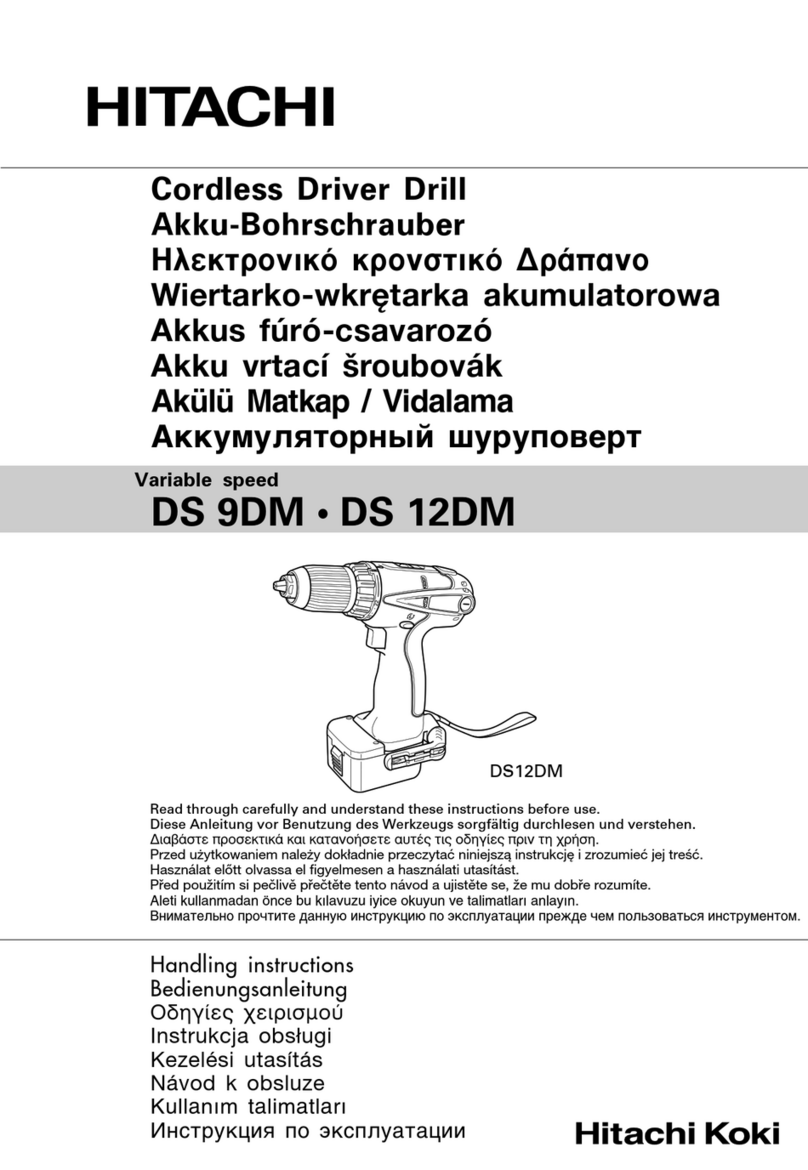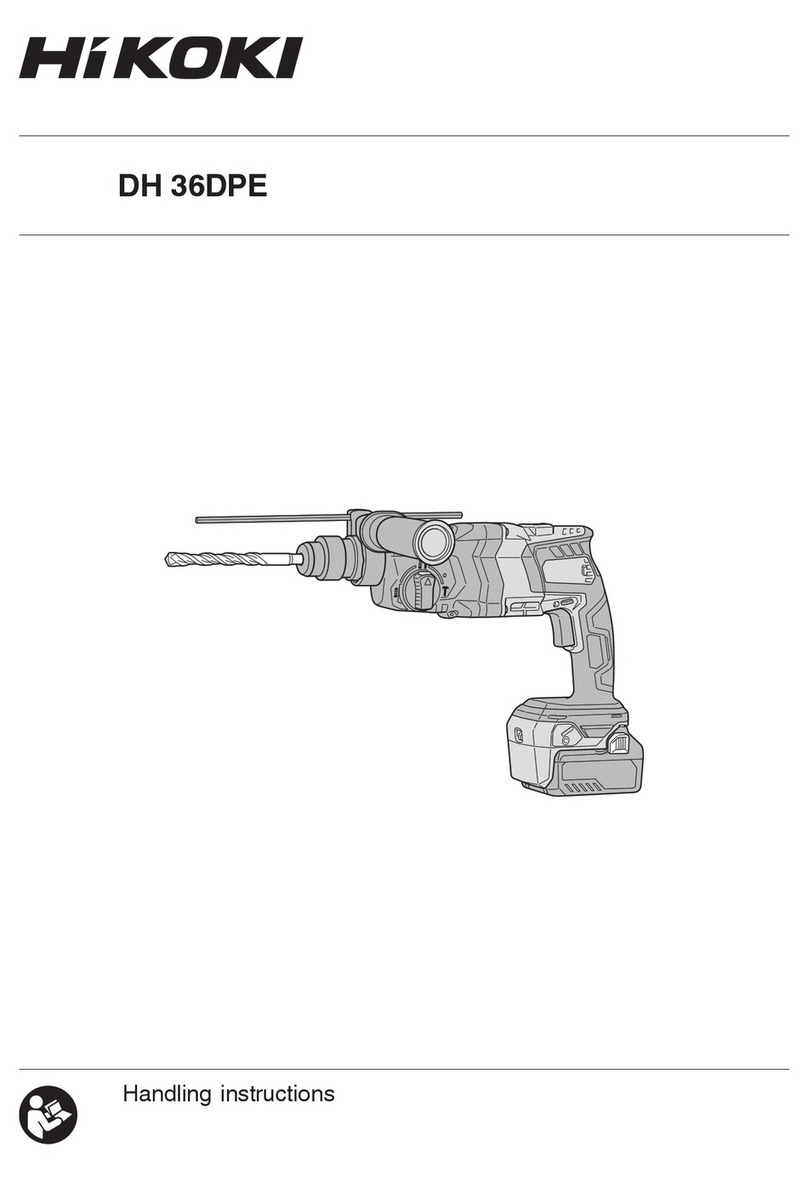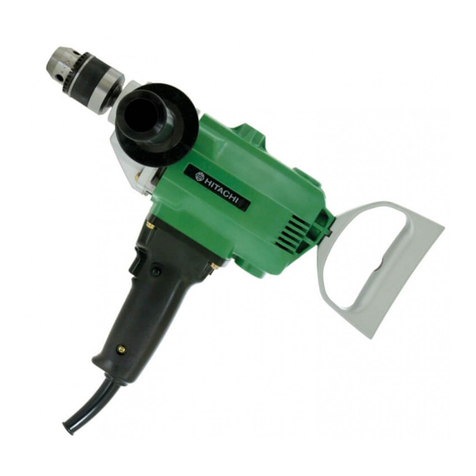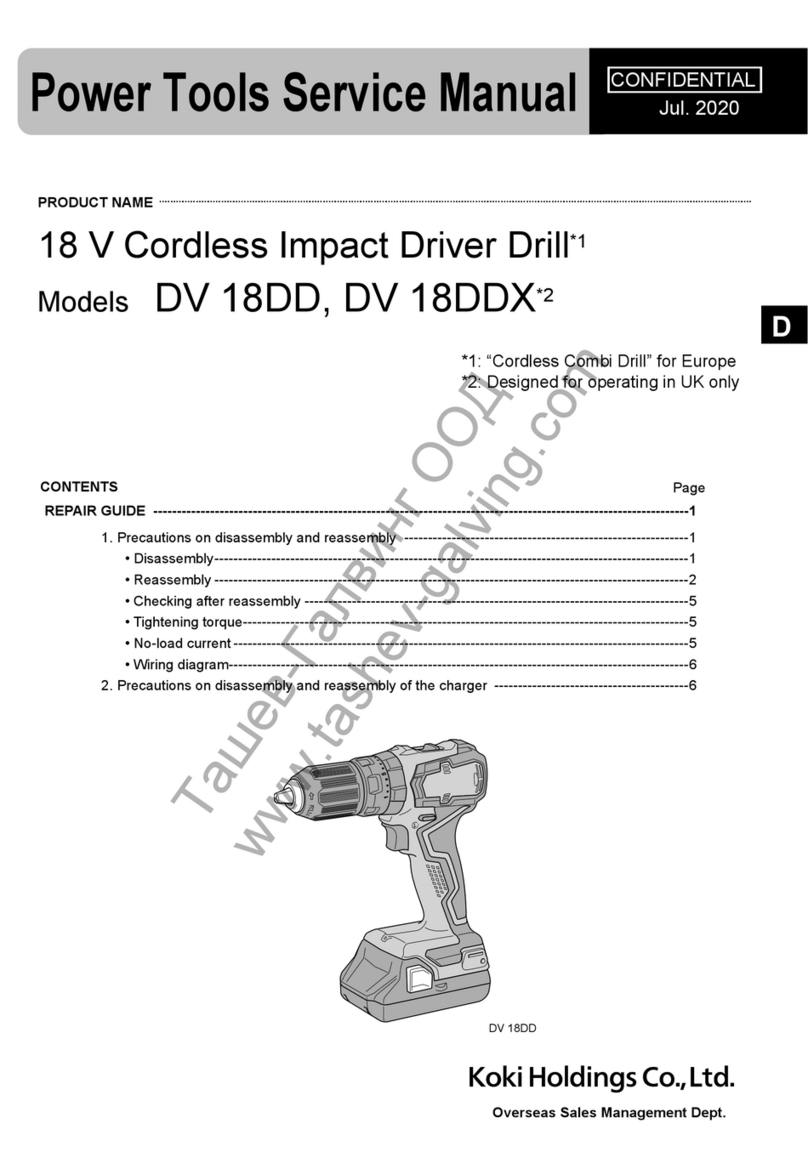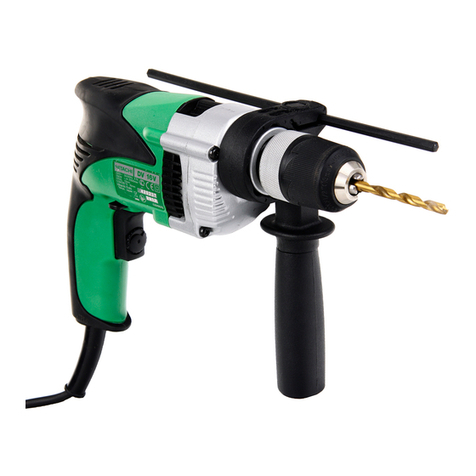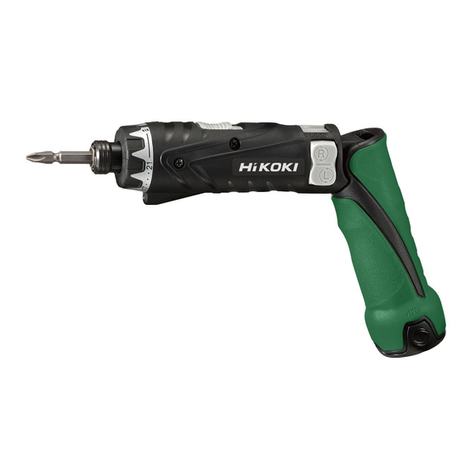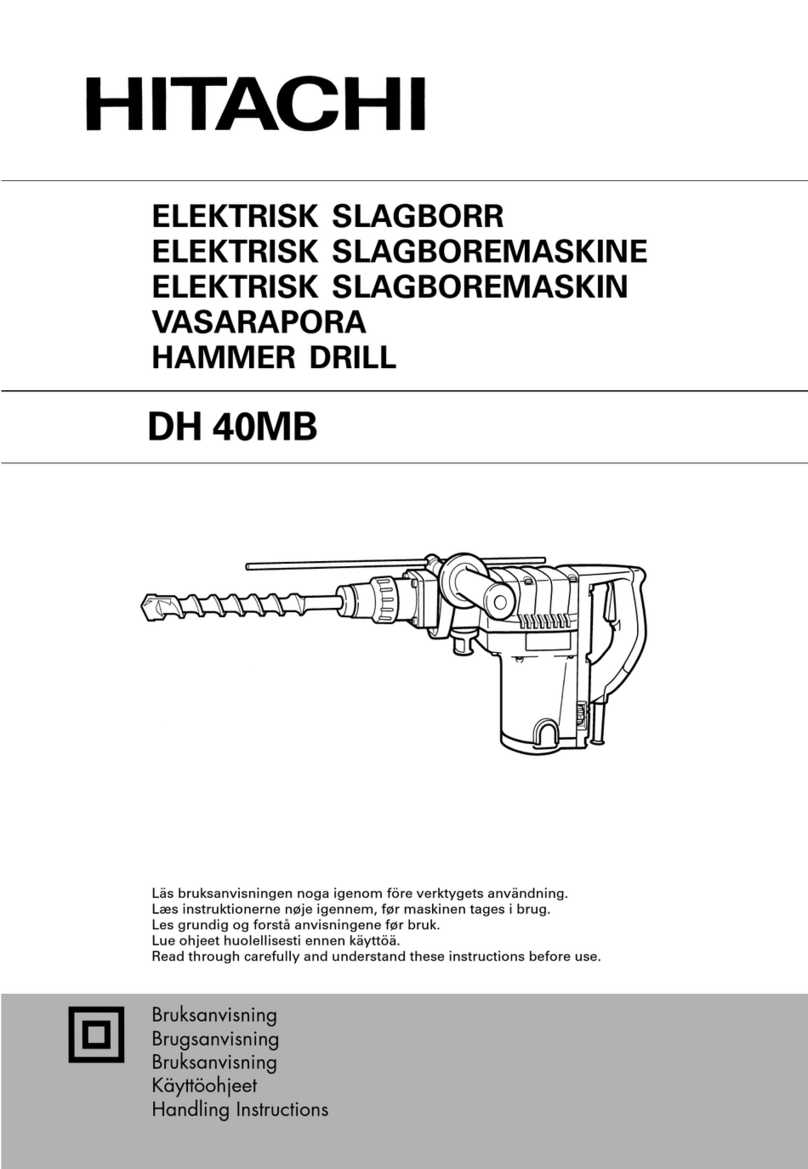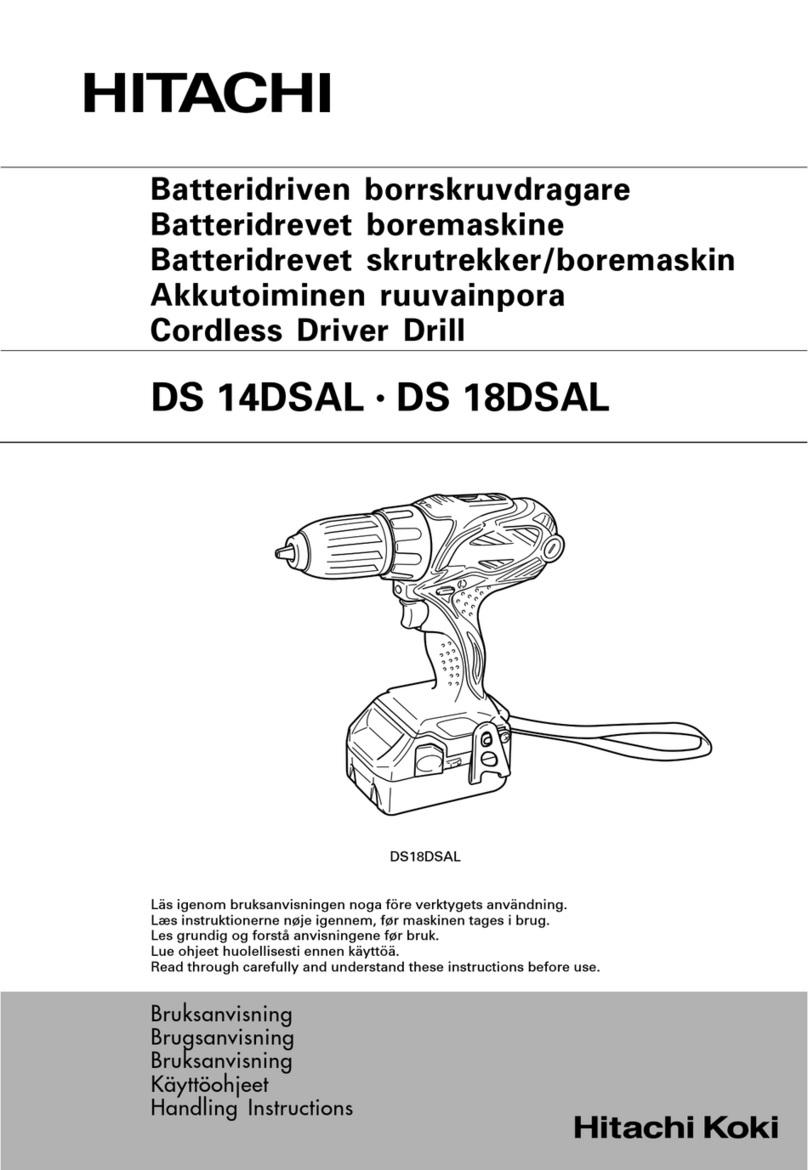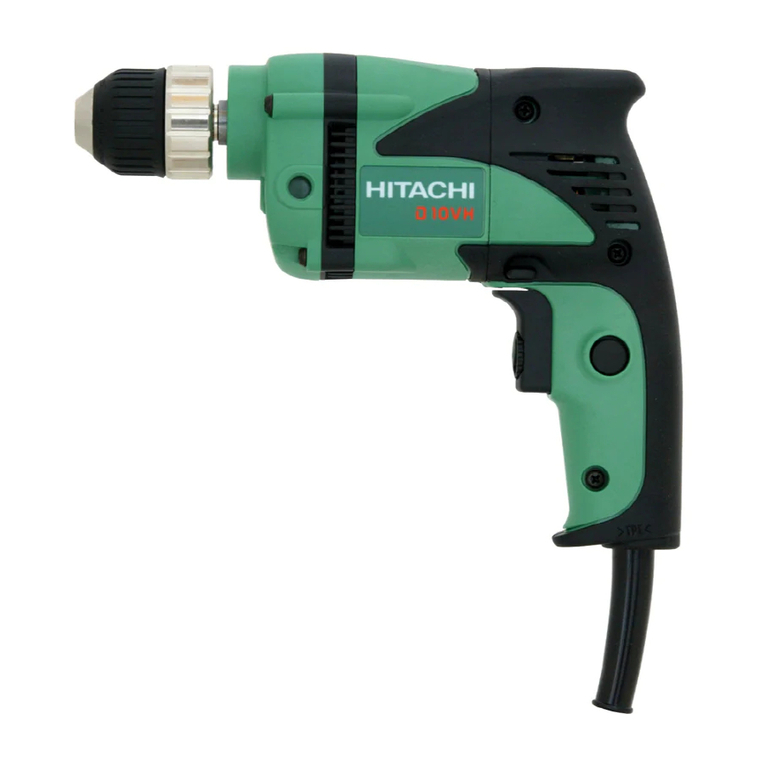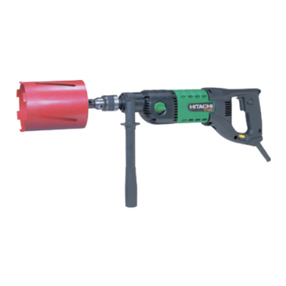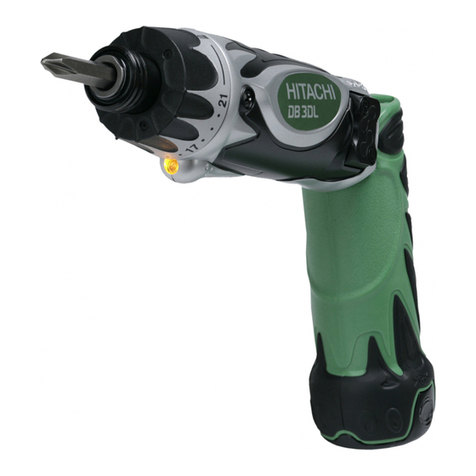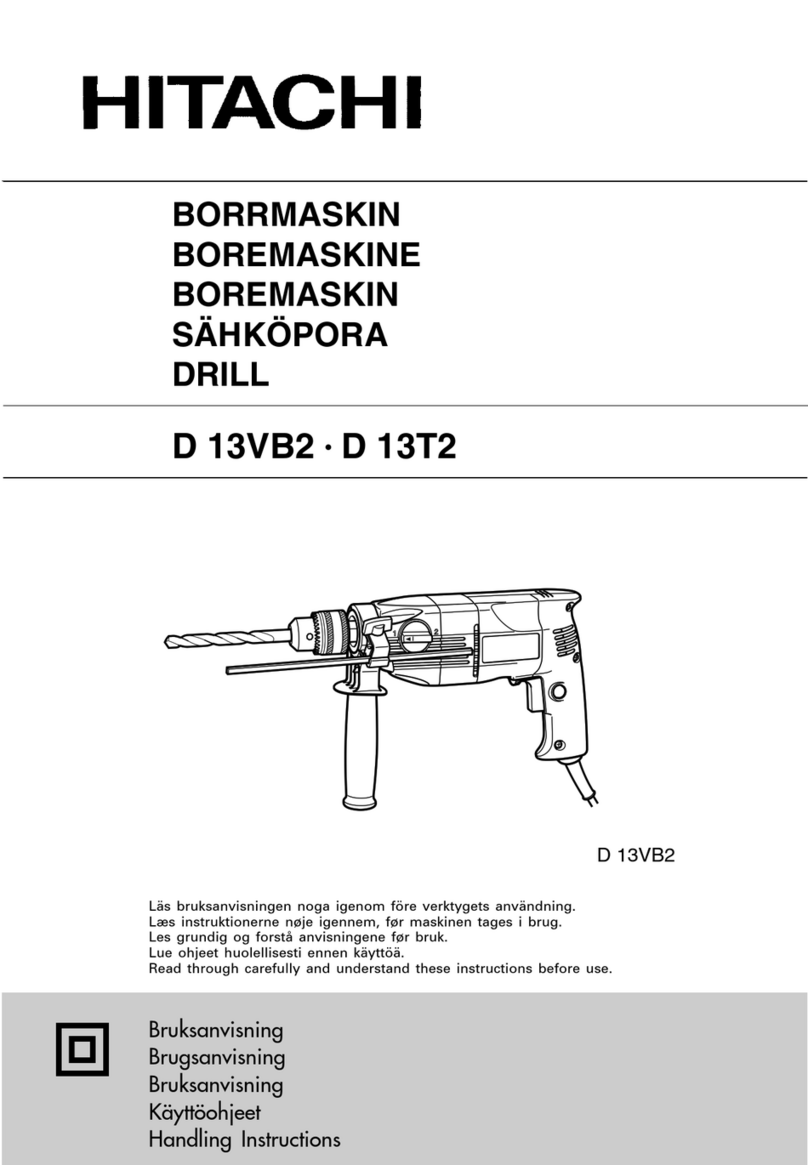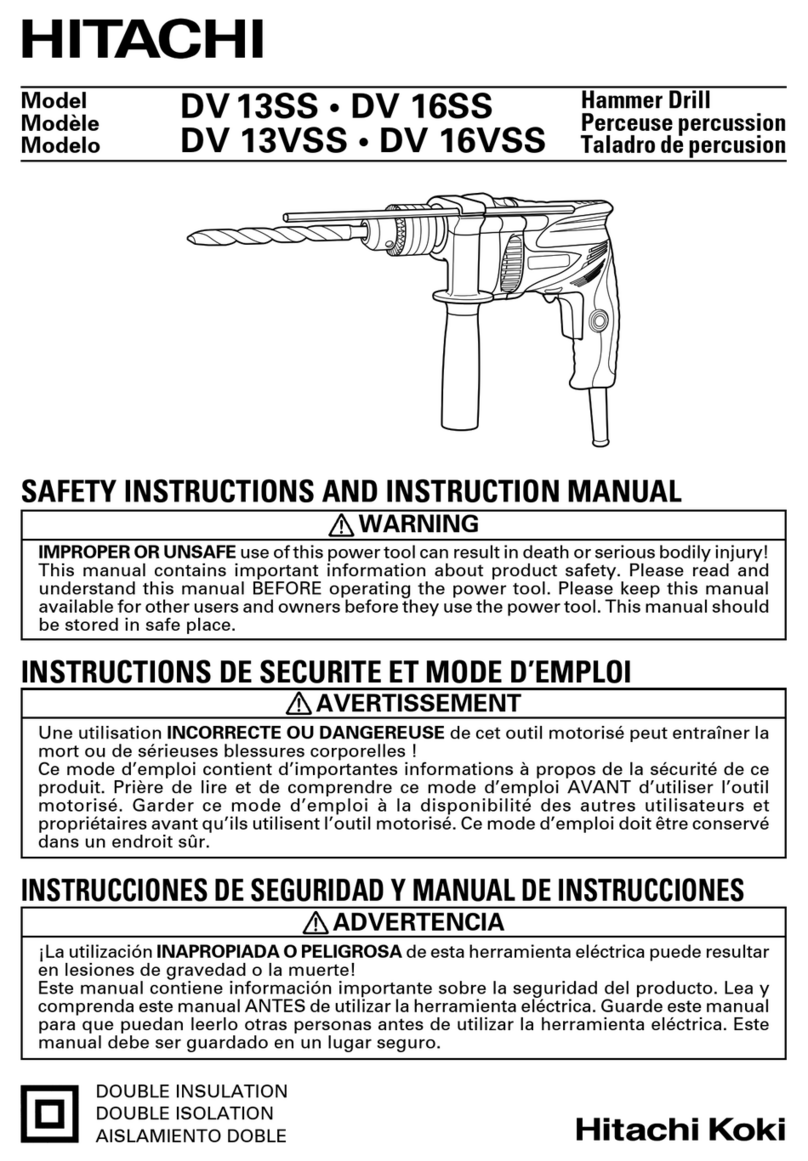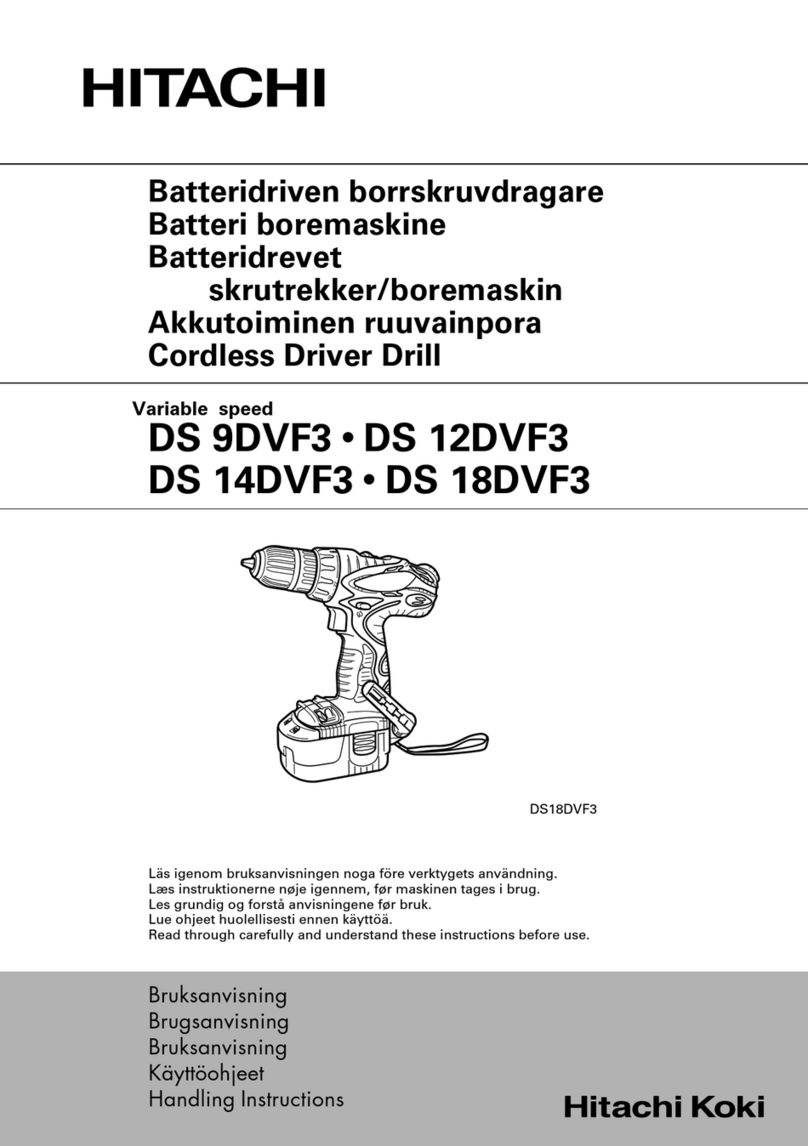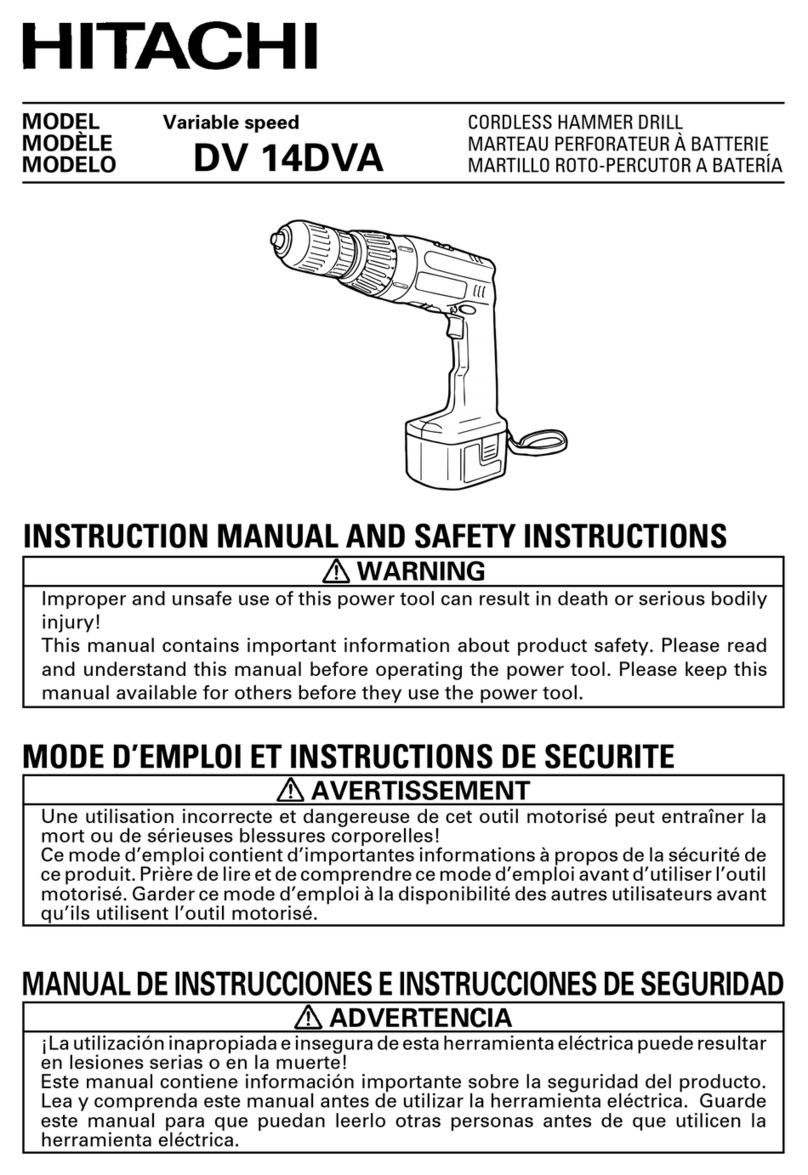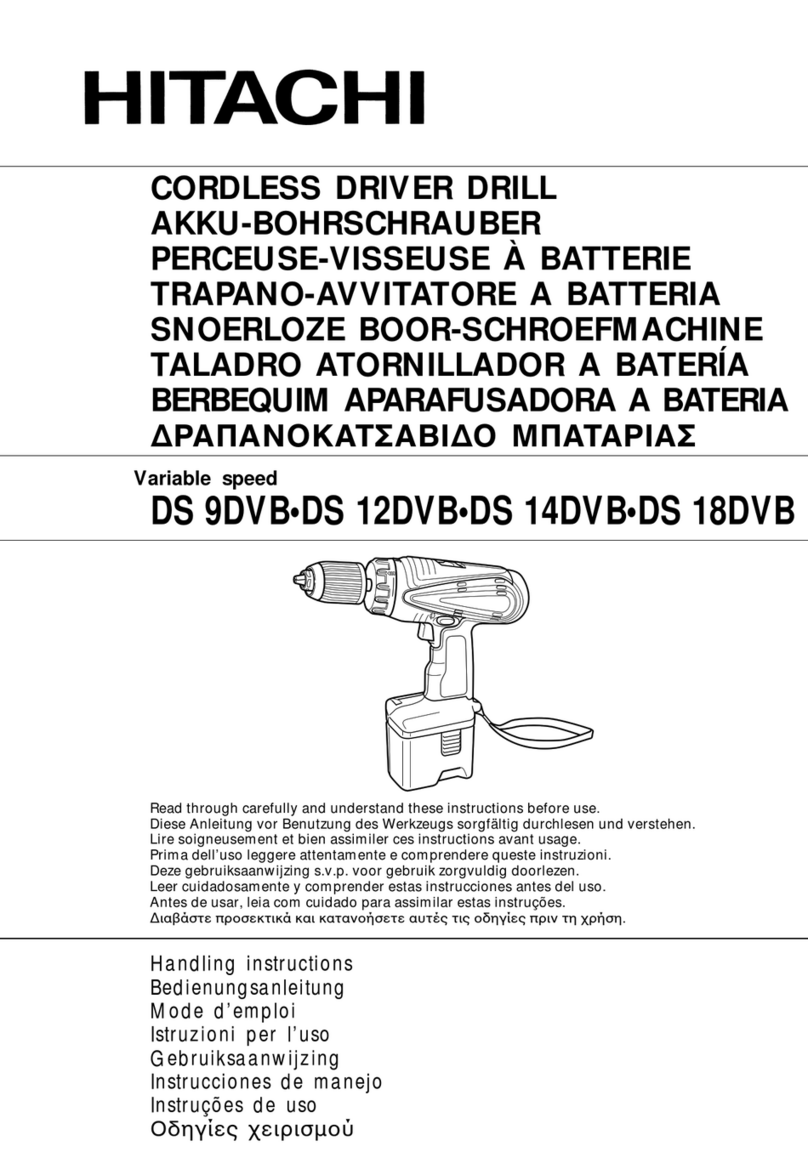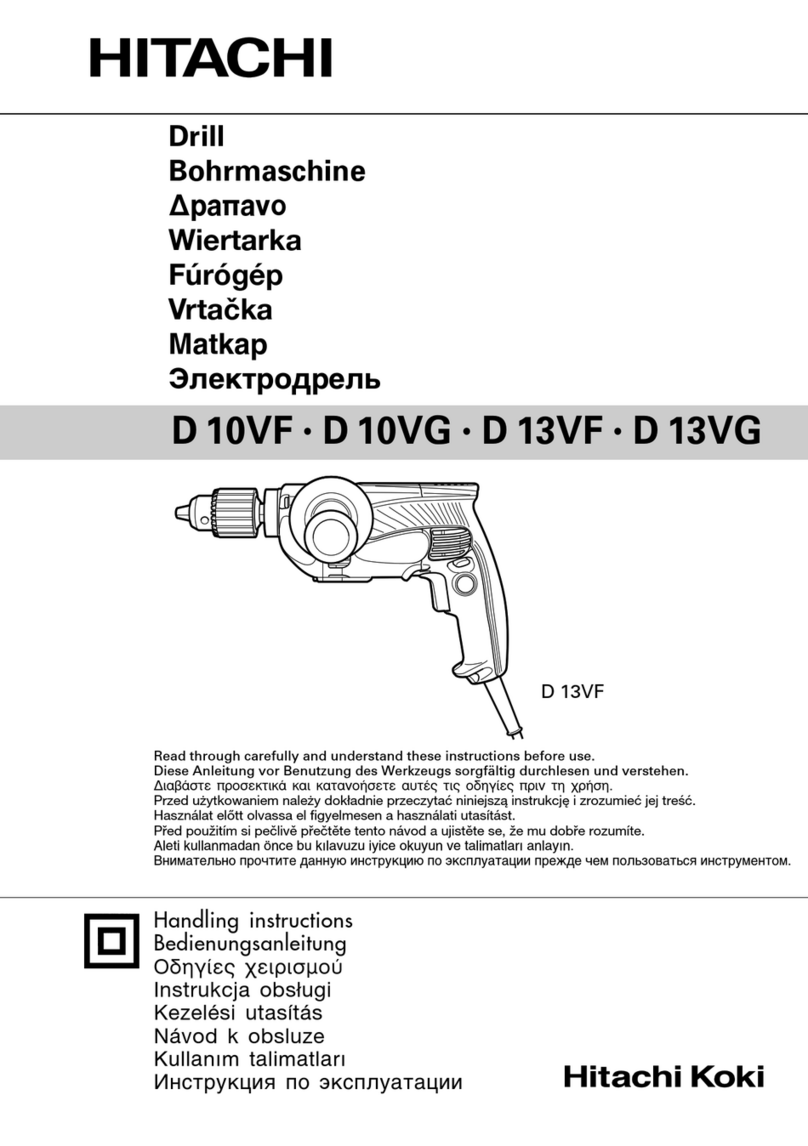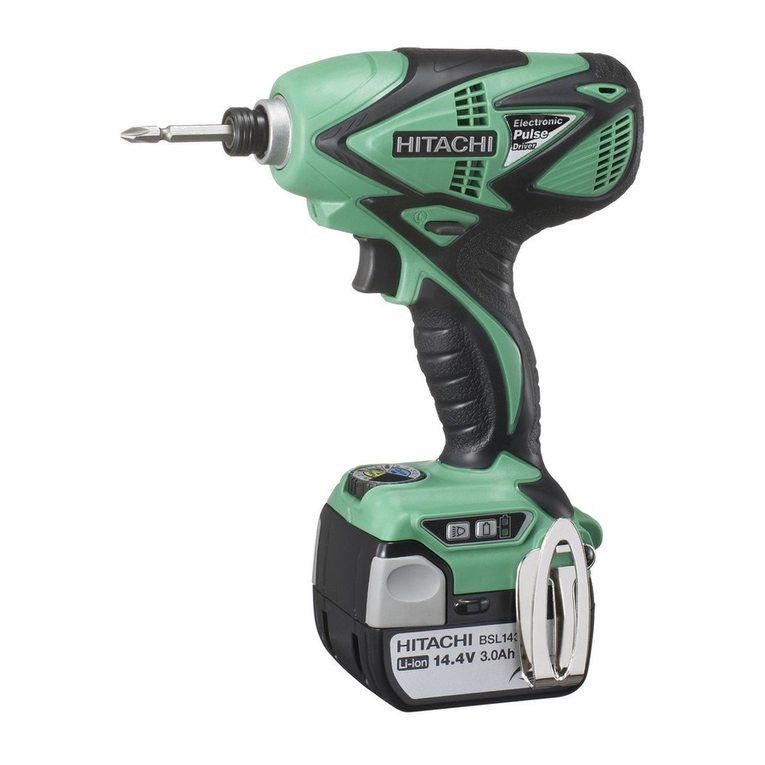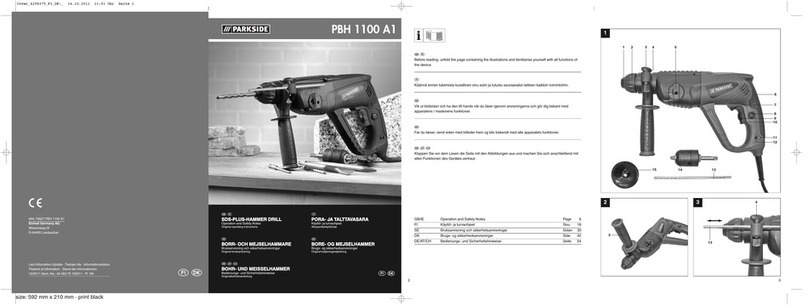
7
c) Use power tools only with specifically designated
battery packs.
Use of any other battery packs may create a risk of
injury and fire.
d) When battery pack is not in use, keep it away
from other metal objects like paper clips, coins,
keys, nails, screws, or other small metal objects
that can make aconnection from one terminal to
another.
Shorting the battery terminals together may cause
burns or a fire.
e) Under abusive conditions, liquid may be ejected
from the battery; avoid contact. If contact
accidentally occurs, flush with water. If liquid
contacts eyes, additionally seek medical help.
Liquid ejected from the battery may cause irritation or
burns.
6) Service
a) Have your power tool serviced by aqualified
repair person using only identical replacement
parts.
This will ensure that the safety of the power tool is
maintained.
PRECAUTION
Keep children and infirm persons away.
When not in use, tools should be stored out of reach of
children and infirm persons.
PRECAUTIONS FOR CORDLESS DRIVER DRILL
1. Always charge the battery at atemperature of 10°C –
40°C. Atemperature of less than 10°C will result in over
charging which is dangerous. The battery cannot be
charged at atemperature higher than 40°C.
The most suitable temperature for charging is that of
20°C –25°C.
2. When one charging is completed, leave the charger for
about 15 minutes before the next charging of battery.
Do not charge more than two batteries consecutively.
3. Do not allow foreign matter to enter the hole for connecting
the rechargeable battery.
4. Never disassemble the rechargeable battery and
charger.
5. Never short-circuit the rechargeable battery. Short-
circuiting the battery will cause agreat electric current
and overheat. It results in burn or damage to the battery.
6. Do not dispose of the battery in fi re.
If the battery is burnt, it may explode.
7. When drilling in wall, fl oor or ceiling, check for buried
electric power cord, etc.
8. Bring the battery to the shop from which it was purchased
as soon as the post-charging battery life becomes too
short for practical use. Do not dispose of the exhausted
battery.
9. Using an exhausted battery will damage the charger.
10. Do not insert object into the air ventilation slots of the
charger.
Inserting metal objects or infl ammables into the charger
air ventilation slots will result in electrical shock hazard or
damaged charger.
11. When mounting abit into the keyless chuck, tighten the
sleeve adequately. If the sleeve is not tight, the bit may
slip or fall out, causing injury.
12. This product contains astrong permanent magnet in the
motor.
Observe the following precautions regarding adhering of
chips to the tool and the effect of the permanent magnet
on electronic devices.
CAUTION
○Do not place the tool on aworkbench or work area
where metal chips are present.
The chips may adhere to the tool, resulting in injury or
malfunction.
○If chips have adhered to the tool, do not touch it.
Remove the chips with abrush.
Failure to do so may result in injury.
○If you use apacemaker or other electronic medical
device, do not operate or approach the tool.
Operation of the electronic device may be affected.
○Do not use the tool in the vicinity of precision
devices such as cell phones, magnetic cards or
electronic memory media.
Doing so may lead to misoperation, malfunction or loss of
data.
CAUTION ON LITHIUM-ION BATTERY
To extend the lifetime, the lithium-ion battery equips with the
protection function to stop the output.
In the cases of 1to 3described below, when using this
product, even if you are pulling the switch, the motor may
stop. This is not the trouble but the result of protection
function.
1. When the battery power remaining runs out, the motor
stops.
In such case, charge it up immediately.
2. If the tool is overloaded, the motor may stop. In this
case, release the switch of tool and eliminate causes of
overloading. After that, you can use it again.
3. If the battery is overheated under overload work, the
battery power may stop.
In this case, stop using the battery and let the battery
cool. After that, you can use it again.
(BSL1415X, BSL1830, BSL1815X)
Furthermore, please heed the following warning and caution.
WARNING
In order to prevent any battery leakage, heat generation,
smoke emission, explosion and ignition beforehand, please
be sure to heed the following precautions.
1. Make sure that swarf and dust do not collect on the
battery.
○During work make sure that swarf and dust do not fall on
the battery.
○Make sure that any swarf and dust falling on the power
tool during work do not collect on the battery.
○Do not store an unused battery in alocation exposed to
swarf and dust.
○Before storing abattery, remove any swarf and dust that
may adhere to it and do not store it together with metal
parts (screws, nails, etc.).
2. Do not pierce battery with asharp object such as a
nail, strike with ahammer, step on, throw or subject the
battery to severe physical shock.
3. Do not use an apparently damaged or deformed battery.
4. Do not use the battery in reverse polarity.
5. Do not connect directly to an electrical outlets or car
cigarette lighter sockets.
6. Do not use the battery for apurpose other than those
specifi ed.
000BookDS14DSALKor.indb7000BookDS14DSALKor.indb7 2010/07/078:51:472010/07/078:51:47
